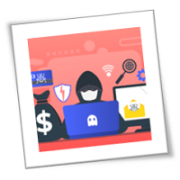How to enhance your company’s BYOD security
Bring your own device (BYOD) is a trend that has grown in popularity because of the convenience it offers employees, but it also presents a serious security risk. If an employee’s personal device is not appropriately secured, it can become a potential entry point for attackers to gain access to sensitive corporate information. Therefore, it is imperative to take steps to strengthen BYOD security. Here’s how you can do just that.
Establish a BYOD policy
The first step in securing personal devices used for work is to establish a clear BYOD policy. This policy should include guidelines for acceptable use of personal devices and security protocols such as device encryption, password policies, and data backup requirements. It should also define the types of data that can be accessed on personal devices and the consequences of policy violations.
Use mobile device management (MDM) software
MDM software allows companies to manage mobile devices from a centralized console. It provides administrators with control over the configuration, application installation, and security settings of mobile devices. With MDM software, administrators can establish company-wide security policies as well as monitor and wipe data from compromised devices.
Implement two-factor authentication (2FA)
Two-factor authentication is a security process that requires users to provide two forms of identification to access company data. This typically includes a combination of passwords and one-time verification codes generated by a third-party authenticator app. By implementing 2FA, the security of a device doesn’t solely depend on the strength of its user’s passwords. Hackers will need to gain access to both authentication factors to hack company devices, which can be incredibly difficult.
Conduct regular security training
Educating employees on security best practices is crucial for any organization. Employees need to be aware of the risks associated with using personal devices for work-related tasks. Companies should conduct regular security training sessions to help employees understand their roles and responsibilities in maintaining the security of company data.
Monitor and enforce compliance
It’s essential to monitor the use of personal devices and ensure compliance with the company’s BYOD policy. This can be done through regular audits, periodic security assessments, and the use of security tools to detect unauthorized access attempts.
Establishing a robust security framework for BYOD is essential for any organization. Companies can work with a managed service provider to ensure that their BYOD security measures are up to date and effective. Call us today and let us help you strengthen your BYOD security.
If you are looking for an expert to help you find the best solutions for your business talk to GCInfotech about a free technology assessment
Published with consideration from TechAdvisory.org SOURCE












